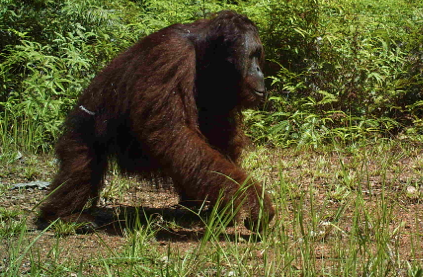New Scientist
Image: Brent Loken
Orang-utans may be perfectly adapted for swinging through trees, but new observations suggest they also spend a surprising amount of time hanging out on the ground.
The finding could have implications for conserving the endangered species – and perhaps help efforts to understand why our ancient ancestors left the trees.
With their long, strong arms and short bowed legs, it’s easy to see why orang-utans are considered the most arboreal of all great apes. But male Bornean orangs have been known to sometimes climb down to the ground.
To find out just how often the apes leave the canopy, Brent Loken at Simon Fraser University in Burnaby, Canada, and colleagues placed a network of ground-based cameras across a 38-square-kilometre region of forest in north-eastern Indonesian Borneo. Remarkably, they found that orang-utans were almost as likely to be caught on camera as a ground-dwelling primate called the pig-tailed macaque, which is roughly as abundant as orang-utans in the forests. The macaques were photographed 113 times over an eight month period, the orang-utans 110 times. Read more on newscientist.com…








